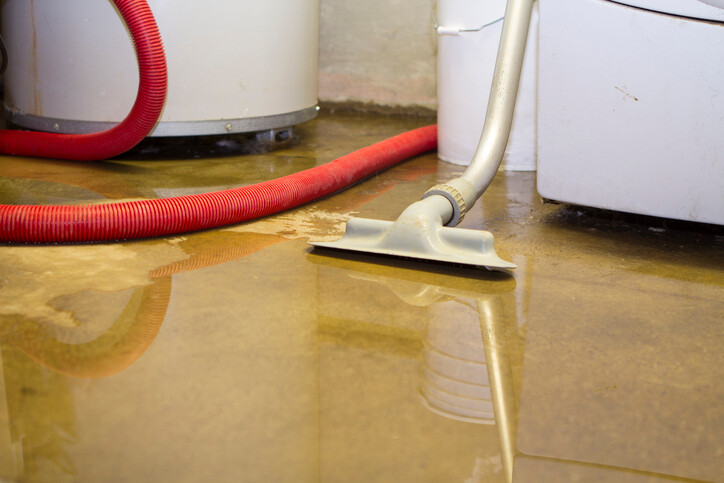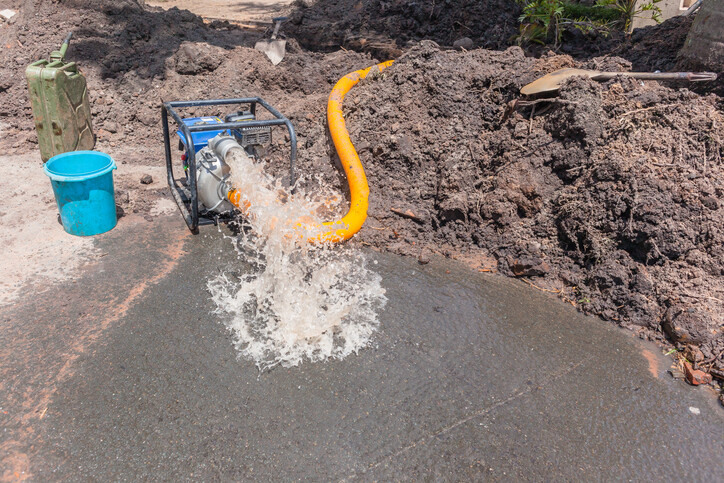 Flooding, whether in your home, on a construction site or on a commercial property, can cause serious disruption and long-term damage if not handled quickly and correctly. From choosing the right equipment to knowing how to safely clean up and prevent further issues, being prepared makes all the difference. This guide walks you through the process of managing flooded areas, with practical advice and equipment recommendations from Paragon Tool Hire.
Flooding, whether in your home, on a construction site or on a commercial property, can cause serious disruption and long-term damage if not handled quickly and correctly. From choosing the right equipment to knowing how to safely clean up and prevent further issues, being prepared makes all the difference. This guide walks you through the process of managing flooded areas, with practical advice and equipment recommendations from Paragon Tool Hire.
Assessing the Situation
Before you bring in any equipment, it’s crucial to understand the nature of the flooding. Furthermore, while this article will focus on flooded areas, it is useful to know that the equipment discussed in the article can serve a number of applications other than flooded basements or building foundations. Here are some examples of what our equipment can be used for:
- Emptying swimming pools
- Emptying ponds
- Irrigating fields or gardens from a water tank or nearby water source
- Draining boats
- Fish farming and aquaculture
- Removing groundwater seepage in mines or tunnels
Flooding can happen in a variety of settings: from a burst pipe in a domestic garage or basement to heavy rain causing construction site run-off, or even an overflowing swimming pool. The first step is to identify the source and severity of the water.
- Clean water from burst pipes or tank leaks poses minimal health risks but still requires prompt action to avoid structural damage and mould growth. Furthermore, in cases such as these it is important to set up a plan for repairing such leaks once most of the water has been removed.
- Contaminated water from natural floods often contains sewage, chemicals and bacteria, making it much more hazardous to handle and clean up. In such a scenario it is best to hire professional help.
Understanding the water source helps you choose the correct pump, protect yourself and know what items may need to be discarded or disinfected.
General Safety
Safety must always come first when entering a flooded area. Follow these precautions to protect yourself and others:
- Turn off electricity to any affected area to prevent electrocution.
- Wear protective gear, including waterproof boots, gloves and masks; especially when dealing with contaminated water.
- Be cautious of hazards such as unstable structures, slippery surfaces and hidden debris.
- Never enter a space if you’re unsure whether it’s structurally safe or if electrical systems are still live.
Finding the Right Equipment
 Once it’s safe to proceed, the next step is water removal, and choosing the correct pump is essential. Generally speaking, there are two basic categories of pumps for these applications: non-submersible pumps such as diaphragm or centrifugal pumps and submersible pumps.
Once it’s safe to proceed, the next step is water removal, and choosing the correct pump is essential. Generally speaking, there are two basic categories of pumps for these applications: non-submersible pumps such as diaphragm or centrifugal pumps and submersible pumps.
Non-Submersible Pumps
These pumps sit outside the water and draw it out through a suction hose. They are ideal for emptying swimming pools, basements, foundations on construction sites, ponds and a number of other areas. Paragon Tool Hire offers reliable options like the 2" Petrol Centrifugal Pump and the 3" Diesel Diaphragm Pump, both excellent for rapid water displacement in a wide range of scenarios.
Submersible Pumps
Submersible pumps such as the Flygt 2” Submersible Pump are placed directly into the flooded area and can operate while fully submerged. They’re perfect for tight or deep spaces and can lower water levels to just a few millimetres. Due to their ability to remove water to such low levels, these pumps are ideal for flooded basements.
Drying and Dealing with the Damage
Once the standing water has been removed, the drying process begins. This is where many recovery efforts succeed or fail. Inadequate or rushed drying can lead to rot, mould and structural deterioration that may not become apparent until weeks or months later. Additionally, if the flooding was due to a burst pipe, it’s essential to locate and fix the source of the leak before drying begins, or you risk repeating the problem.
Key Equipment for Effective Drying:
 Electric Heaters: These are ideal for controlled heating of affected areas. Electric models such as the HSC 240V Fan Heater are preferred because fuel-powered heaters (like gas or diesel units) can release moisture as a by-product of combustion, ironically raising humidity levels. Electric heaters help increase the ambient temperature, which accelerates the evaporation of residual moisture in walls, flooring and furnishings.
Electric Heaters: These are ideal for controlled heating of affected areas. Electric models such as the HSC 240V Fan Heater are preferred because fuel-powered heaters (like gas or diesel units) can release moisture as a by-product of combustion, ironically raising humidity levels. Electric heaters help increase the ambient temperature, which accelerates the evaporation of residual moisture in walls, flooring and furnishings.
- High-Velocity Fans: These fans create strong airflow across wet surfaces, encouraging faster drying by constantly moving moist air away and replacing it with drier air. Models such as the Clarke 230V Industrial Electric Fan are especially useful for underfloor voids or crawlspaces, behind skirting boards or around damp plaster and concrete. It is important to note that while fans help with the drying process, they can also reduce air temperature, counteracting the usefulness of electric heaters.
- Dehumidifiers: A crucial part of the drying trifecta. Dehumidifiers such as our Ebac Large Dehumidifier draw moisture from the air, reducing ambient humidity and preventing condensation from settling back onto surfaces. They're essential for enclosed rooms with limited ventilation, areas where damp has penetrated deep materials like insulation or timber and minimising the risk of mould spores developing during the drying phase.
Additional Tips for Thorough Drying:
- Open windows where safe to do so, especially early on, to release moist air.
- Lift and prop up soaked carpets and underlays to dry both sides or consider removal if floodwater was contaminated.
- Remove baseboards or skirting to allow air circulation into wall cavities.
- Use moisture meters to monitor hidden damp spots and track drying progress.
Efficient drying isn't just about getting a space back to normal: it's about stopping further damage in its tracks, eliminating conditions that allow bacteria and mould to thrive and laying the groundwork for a safe, clean rebuild or restoration.
Dealing with Pathogens
Water damage often brings hidden health risks. It’s important to understand the type of water involved to make informed cleanup decisions. Clean water spills may allow for saving materials like carpets or furnishings.
Dirty or flood water, which may contain bacteria, chemicals or even fecal matter, requires more aggressive action. For example, a carpet soaked with flood water should be discarded, as it can harbour harmful microbes even after drying. Thorough cleaning, disinfection and proper ventilation are key to preventing mould and bacterial growth that can pose health hazards long after the flood has receded.
Why Choose Paragon Tool Hire for Pumping and Drying Equipment
At Paragon Tool Hire, we offer a wide range of professional-grade pumps, heaters, fans and dehumidifiers to help you recover quickly and safely from flooding. Whether you’re clearing out a small garage or a large construction site, our knowledgeable team can recommend the right tools for the job.
When disaster strikes, having the right tools and the right team behind you makes all the difference. Get in touch with Paragon Tool Hire today on 01280822282 to find the equipment you need to take control of the situation.
